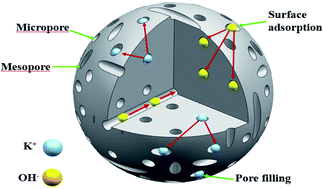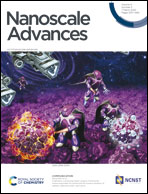Bio-inspired hierarchical nanoporous carbon derived from water spinach for high-performance supercapacitor electrode materials†
Abstract
Due to various properties, green carbon nanomaterials with high specific surface area and environmentally friendly features have aroused extensive interest in energy storage device applications. Here, we report a facile, one-step carbonization of water spinach to synthesize porous carbon that exhibits a high specific surface area of ∼1559 m2 g−1, high specific capacitance (∼1191 F g−1 at 1 A g−1), a low intercept (0.9 Ω), outstanding rate capability and superior cycling stability (94.3% capacitance retention after 10 000 cycles). Moreover, the assembled symmetric cell delivers a high energy density of ∼85 W h kg−1 at 1200 W kg−1 and ultra-high stability (loss of 6.8% after 10 000 cycles). An energy density of 49 W h kg−1 could also be achieved even with a power density of up to 24 kW kg−1, which indicates that this material could be a promising candidate for future applications in aqueous-based supercapacitors.



 Please wait while we load your content...
Please wait while we load your content...